AtaGenix Laboratories
AtaGenix Laboratories
Release time: 2025-09-28 View volume: 368
In the golden autumn of September, AtaGenix continues to provide core technical support for numerous research projects, enabling teams to achieve new progress in cutting-edge studies. Recently, several achievements were published in prestigious international journals such as the Journal of Nanobiotechnology and Cell Reports, covering research areas including lipid nanoparticles, gastric cancer drug resistance, and the LayV virus, reflecting the continuous expansion and deepening of life science exploration. AtaGenix’s technical services played a pivotal role, driving the consistent output of research results.
No. 1
Title: Spleen-targeted NeoPol-mL242 mRNA vaccine induces robust T-cell responses in a hepatocellular carcinoma model
Journal: Journal of Nanobiotechnology
Impact Factor: 12.6
Author Affiliation: School of Life Sciences, East China Normal University
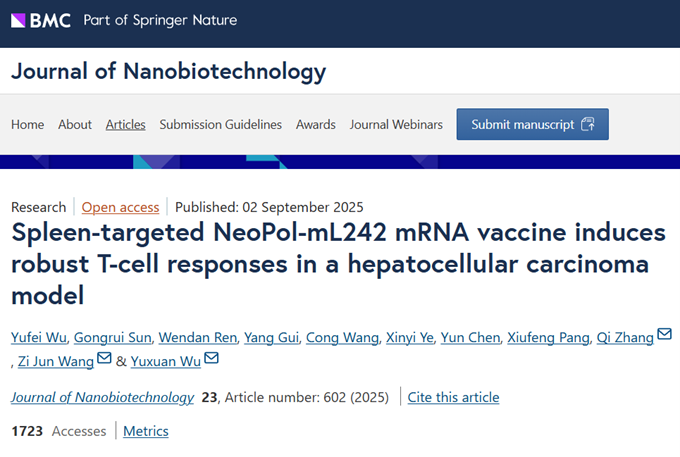
This study addresses the issue of mRNA delivery systems predominantly accumulating in the liver by designing a novel ionizable lipid library, optimizing the spleen-targeted L242-20Lipo nanoparticles. These nanoparticles, without requiring targeting ligand modifications, are efficiently taken up by dendritic cells (DCs), achieving selective spleen delivery while reducing liver distribution. When used to deliver personalized neoantigen mRNA vaccines (NeoPol-mL242), validation in a hepatocellular carcinoma model demonstrated that the vaccine induces potent anti-tumor immunity, significantly reduces tumor burden, extends mouse survival, and exhibits good safety with no significant abnormalities in serum biochemistry or pathology, offering a new candidate for cancer immunotherapy.
AtaGenix provided anti-mouse MHC tetramer-PE antibodies (targeting Ptpn2₃₇₆₋₃₈₄ (RWLYWQPTL): H-2K). These antibodies were used in flow cytometry analysis to detect the proportion of neoantigen-specific T cells among tumor-infiltrating CD8⁺ T cells, supporting the validation of NeoPol-mL242 vaccine-induced neoantigen-specific immune responses and providing a critical tool for confirming targeted anti-tumor immune effects.
No. 2
Title: Structural composition and evolution of jujube centromere reveal a dominant role for LTR Retrotransposons
Journal: Horticulture Research
Impact Factor: 8.5
Author Affiliation: Hebei Agricultural University
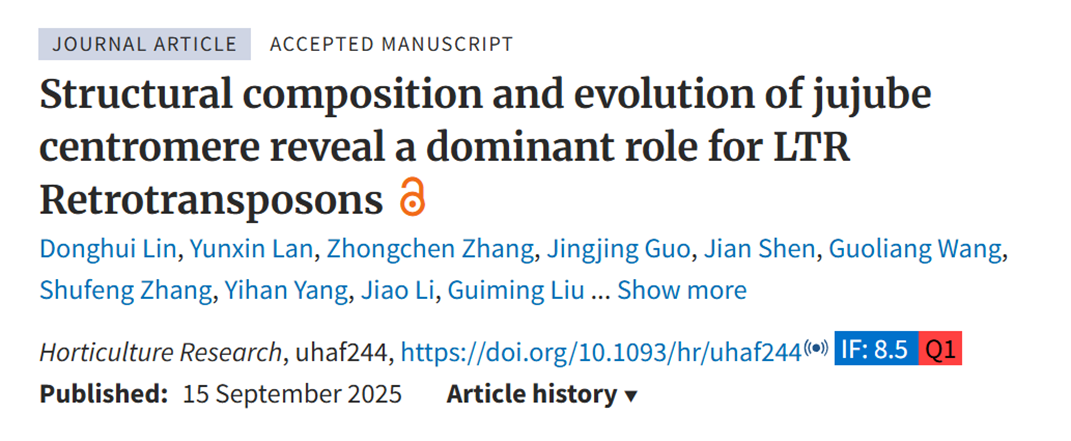
This study updated the jujube genome assembly to a haplotype-resolved telomere-to-telomere (T2T) version, using CENH3 ChIP-seq to precisely locate jujube centromeres. Jujube centromeres, ranging from 0.75 to 1.40 Mb, are generally conserved across haplotypes (with partial inversion only on chromosome 10). Unlike the tandem repeat (TR)-enriched structures typical in most plants, jujube centromeres are primarily composed of Gypsy-type long terminal repeat retrotransposons (LTR-RTs), with the identification of the centromere-enriched LTR family CRJ. Cross-species analysis revealed that centromeric retrotransposons belong to the CRM, Tekay, and Athila subfamilies, with early CRJ insertion fragments potentially contributing to TR-like structure formation, providing new insights into fruit tree centromere research.
AtaGenix prepared rabbit anti-jujube CENH3 polyclonal antibodies, generated against a specific 20-amino-acid peptide segment of jujube CENH3 protein (LAERKLRRPSGGVSTPSPRK). These antibodies were used in chromatin immunoprecipitation sequencing (ChIP-seq) experiments to capture CENH3-bound chromatin fragments, enabling precise localization of jujube centromeres and providing a critical experimental tool for elucidating their structural composition, haplotype differences, and evolutionary characteristics.
No. 3
Title: LncRNA BASP1-AS1 Drives PCBP2 K115 Lactylation to Suppress Ferroptosis and Confer Oxaliplatin Resistance in Gastric Cancer
Journal: Free Radical Biology and Medicine
Impact Factor: 8.2
Author Affiliation: Department of Surgery, Medical College of Jiangnan University
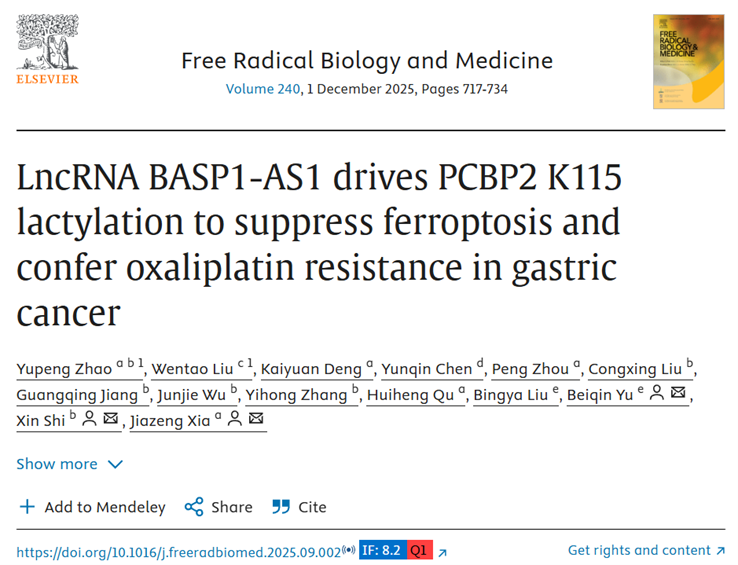
This study investigates the mechanistic role of long non-coding RNA BASP1-AS1 in oxaliplatin resistance in gastric cancer. It was found that BASP1-AS1 assembles the BASP1-AS1/ULK1/LDHA complex, activating LDHA enzyme activity to increase lactate production. Lactate induces lactylation at the K115 site of PCBP2, preventing its interaction with the E3 ubiquitin ligase ARIH2, inhibiting ubiquitination-mediated degradation, and stabilizing PCBP2. Additionally, BASP1-AS1 mediates histone H3K14 lactylation, transcriptionally upregulating LDHA and PCBP2, forming a metabolic-epigenetic positive feedback loop. This loop suppresses ferroptosis, leading to oxaliplatin resistance in gastric cancer cells, providing potential targets for overcoming resistance.
AtaGenix custom-produced PCBP2 K115la-specific rabbit polyclonal antibodies. These antibodies were used to detect PCBP2 K115 lactylation levels, supporting validation of BASP1-AS1’s regulatory role in PCBP2 K115la and providing a specific detection tool for elucidating the critical role of PCBP2 lactylation in oxaliplatin resistance mechanisms in gastric cancer.
No. 4
Title: Functional divergence of G protein γ subunits drives plant vigor and improvement through the CPK28-PIP1;2 pathway in tomato
Journal: Cell Report
Impact Factor: 6.9
Author Affiliation: Department of Horticulture, Zhejiang University
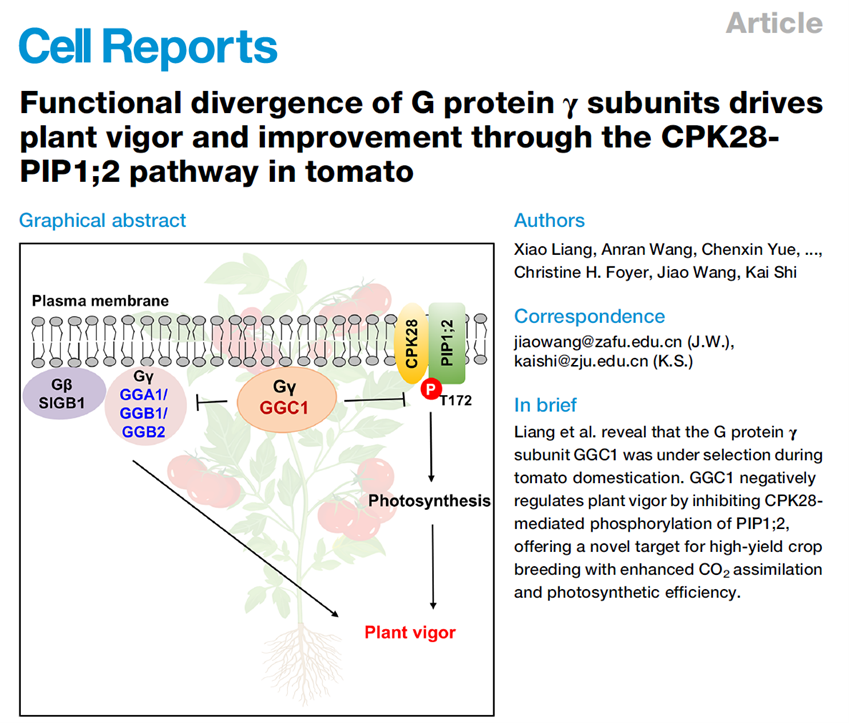
This study explores the regulatory mechanisms of tomato G protein γ subunits in plant vigor, revealing that GGC1 was selected during tomato domestication, with its mutants exhibiting enhanced vigor, including faster growth, increased yield, and improved fruit quality. In contrast, gga1/ggb1/ggb2 triple mutants showed severely impaired vigor. Mechanistically, GGC1 inhibits the interaction of GGA1, GGB1, and GGB2 with SlGB1 and suppresses calcium-dependent protein kinase CPK28-mediated phosphorylation of the aquaporin PIP1;2 at the T172 site. Both CPK28 and PIP1;2 positively regulate photosynthesis to promote plant vigor, offering new targets for breeding high-photosynthetic-efficiency, high-yield tomatoes.
AtaGenix prepared PIP1;2T172-specific phosphorylation antibodies. These antibodies were used to detect phosphorylation levels of PIP1;2 at the T172 site in tomatoes, supporting validation of GGC1’s inhibitory effect on CPK28-mediated PIP1;2 T172 phosphorylation and providing a specific detection tool for elucidating the critical role of PIP1;2 phosphorylation in regulating photosynthesis and plant vigor.
No. 5
Title: Antigenic and structural insights into a Henipavirus attachment glycoprotein
Journal: Virologica Sinica
Impact Factor: 4.0
Author Affiliation: Advanced Biotechnology Laboratory, Beijing Institute of Biotechnology
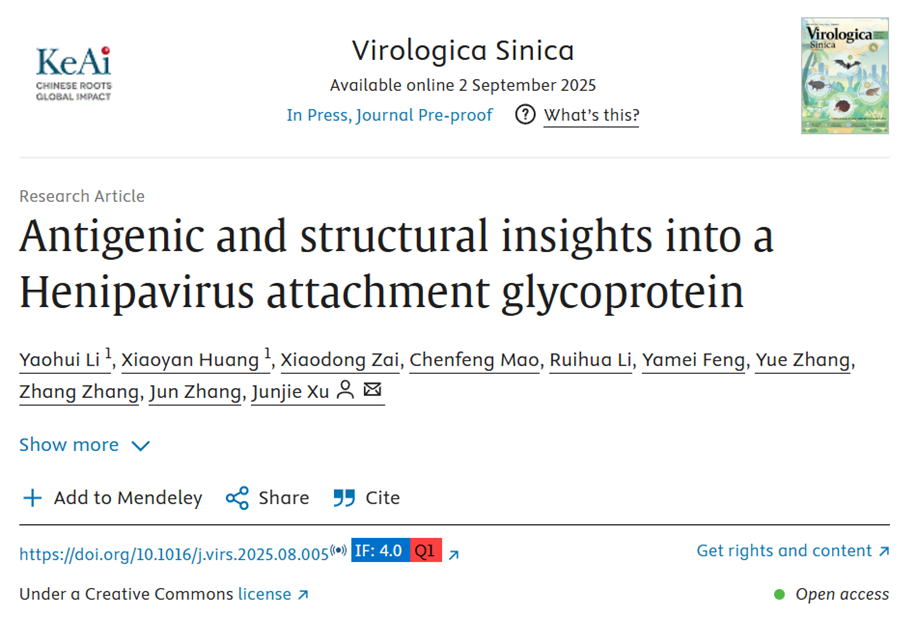
This study elucidates the structure and antigenicity of the LayV G protein, revealing 86% homology with the Mojiang virus (MojV) G protein but lower homology with the Nipah virus (NiV). Its crystal structure was resolved at 3.4 Å, showing a unique glycosylation pattern and inability to bind ephrin-B2/B3 receptors or certain neutralizing antibodies. The LayV G protein induced strong antibody responses in mice against itself and MojV, and nine monoclonal antibodies were isolated, two of which exhibited broad-spectrum binding activity, providing a basis for vaccine and drug development.
AtaGenix provided HAT medium for hybridoma screening and cloning, enabling selective cultivation of hybridoma cells from fused spleen and Sp2/0 myeloma cells, facilitating the isolation of stable cell lines secreting anti-LayV G protein antibodies and laying the foundation for subsequent monoclonal antibody identification and analysis.
AtaGenix’s technical support has helped researchers overcome numerous research bottlenecks, leading to a series of significant discoveries. We will continue to provide monthly literature summaries, focusing on cutting-edge research related to AtaGenix. We hope this series allows everyone to gain a deeper and more comprehensive understanding of AtaGenix’s immense potential and widespread impact. As of September 2025, over 400 publications have cited AtaGenix’s one-stop protein and antibody development technical services. Looking ahead, AtaGenix will continue to fully support scientific research, driving technological innovation and breakthroughs.
Contact Us
+86-27-87001869
info@atagenix.com
Building C, R & D Building, No. 666, Shendun 4th Road, Donghu New Technology Development Zone, Wuhan

